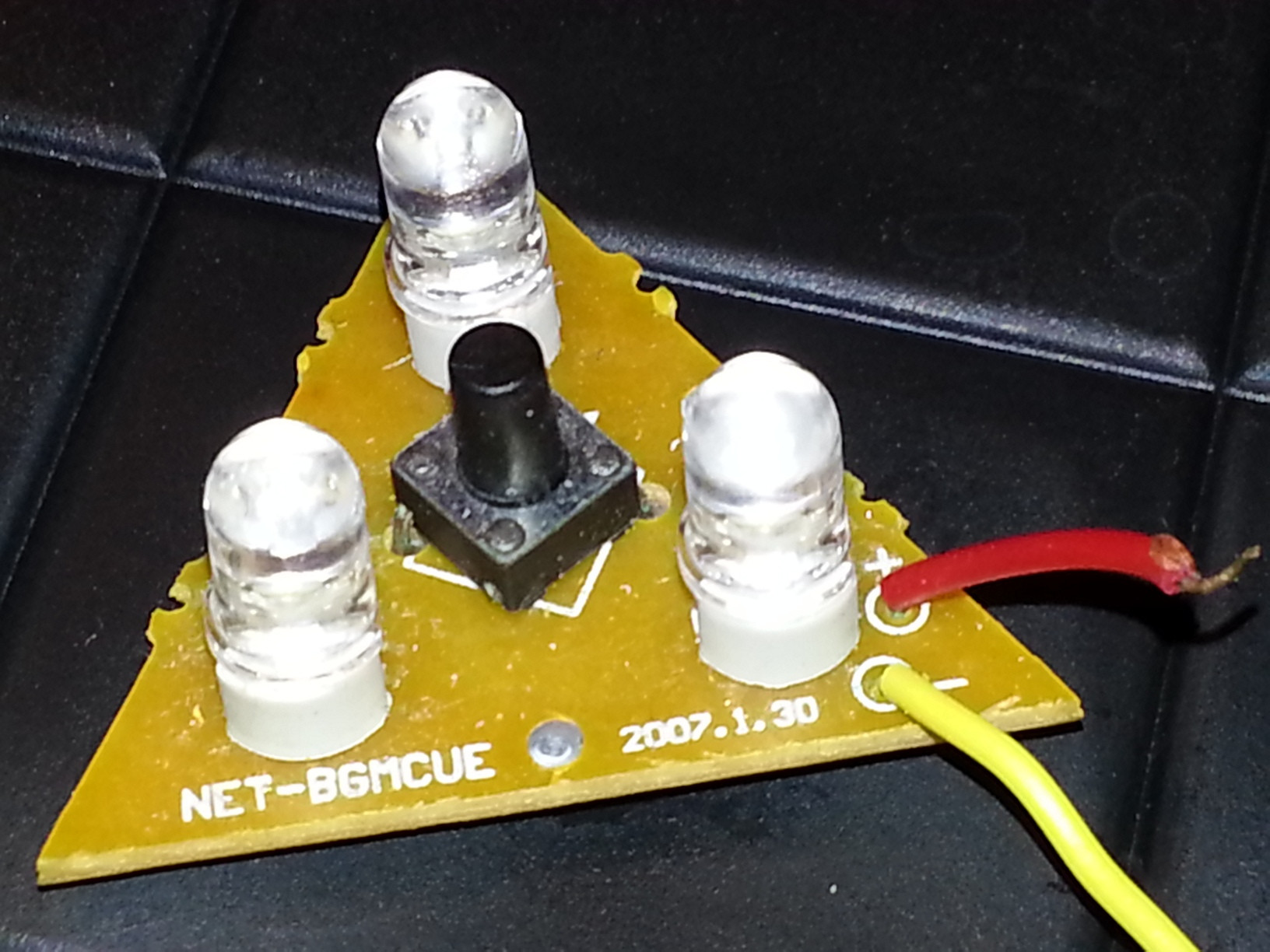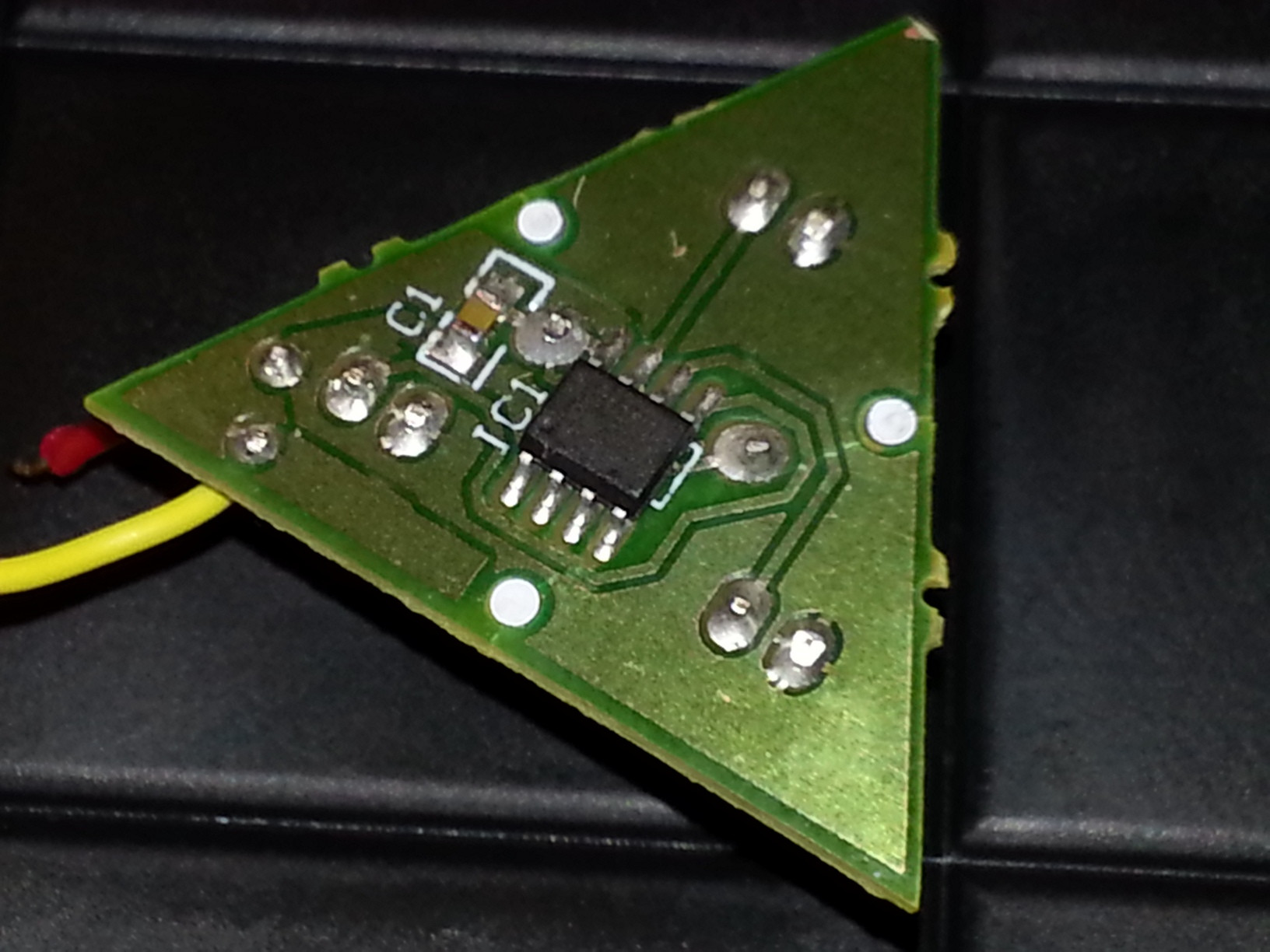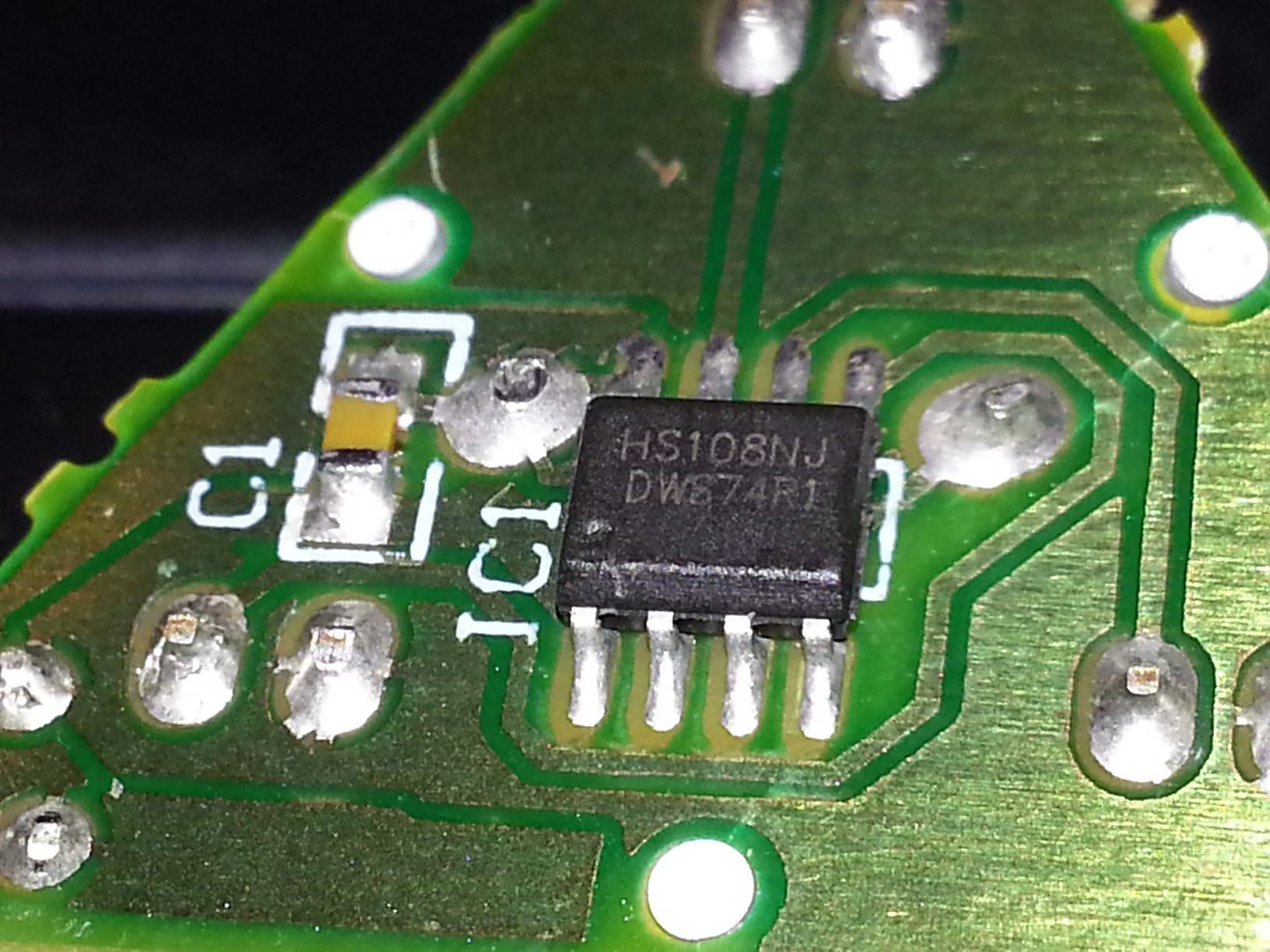Disclaimer: I already know the solution of this circuit debugging conundrum (and it is not trivial), and I'll post it after some time, so that other people could give their contribution to this mystery story! I think it may have some educational value for circuit designers!
Some years ago (~8, IIRC) I stumbled upon a very interesting special offer at a local general store: some very nice (so I thought) Osram DOT-IT LED light appliances at half the price.
As you can see, they were small appliances, powered by three AAA batteries, encasing 3 very bright white LEDs. The whole thing was switched on through a soft switch actuated by pressing the transparent dome. At 1st press the three LEDs would turn on, and at every subsequent press one of the LED would turn off. So you could have the possibility to choose the amount of light the appliance would produce. The outer case, besides the transparent plastic dome, was very strong anodized aluminium with the back cover being plastic with a strong magnet, which allowed to stick the thing to the fridge, the car body shop or whatever suitable metallic surface you might need.
Since at the time LED lighting was very expensive here in Italy, and small gadgets like those were either monstrously expensive or totally crappy, I thought it a very good idea to buy a dozen of them (I tried with just one first, and verified it made very strong light and was very high quality). I intended to use them as emergency lights in every room of my house and in my car.
All was fine until a brief black out happened after about 6 months. To my great disappointment, about 10 out of 12 of the things had their batteries dead!
Of course my first thought was "crappy leaky soft switch" and I ran for my micro-ammeter! Effectively I found a couple of units that had excessively high leakage currents (about mA), but the other ones had a quite honest ~20μA. I was puzzled.
I replaced all the batteries in the low-leakage ones and decided to give them another try. After a couple of months, surprise, they failed again! I measured the leakage again and got different results. Some units sported the terrible ~1mA leakage, whereas the other were "normal". Moreover, I retested the two units which originally showed high leakage and... they didn't leak any longer!!!
I was fed off and since I had got no more time to waste on the issue back then, I scrapped them all, put them in a junk box (after all, they had three nice and expensive white LEDs in them, and I planned to salvage them) and forgot about them.
I found them again a couple of weeks ago and, in a reorganization frenzy, I thought to dismantle the units and salvage the LEDs. So I discovered that the internal circuitry was a tiny PCB holding just a momentary switch, the LEDs, a driver chip and a cap. The PCB is shown in the photos below (for curiosity I tried finding a datasheet for that driver chip, but with no luck).
I tested the PCBs again, just for fun, and I still got the erratic leakage behavior I had observed before, but in the process I finally discovered the culprit.
Guess what was the cause of that random and erratic leakage!




